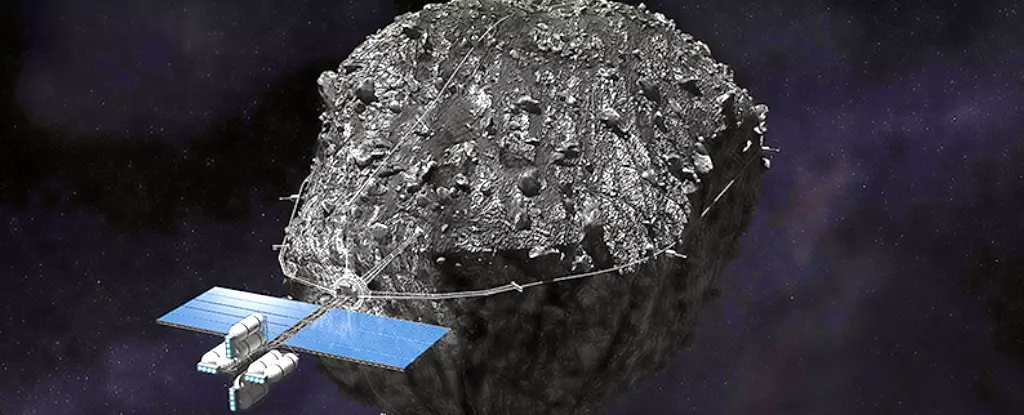Asteroid mining is often bandied about in popular discussions as the next frontier of resource acquisition, with projections for individual asteroids ballooning into astronomical figures that make the average person’s head spin. The attention-grabbing headline numbers—such as Psyche’s estimated worth of a staggering $10 quintillion—may serve to excite readers, but they seldom delve into the actual feasibility of such ventures or the accuracy of these valuations. A deeper analysis reveals nuances that challenge the oversimplified narrative presented by the media.
Recent research funded by the asteroid mining startup Astroforge and conducted by experts at the Colorado School of Mines has taken a critical look at the composition of asteroids, particularly the acclaimed metallic asteroid, Psyche. The findings challenge the popular conception that some asteroids are composed predominantly of pure metals. Instead, evidence suggests that many of these celestial bodies may contain a complex amalgamation of materials.
Asteroids have long been categorized based on their presumed metal content and potential utility. However, the researchers argue that not all metals are worthy of harvesting for return to Earth, with the noble metals of the platinum group emerging as the prime candidates due to their high market value and low availability on our home planet. By contrast, abundant metals like iron and aluminum, while integral for in-space construction, may not present a lucrative return investment if transported back to Earth where their prices are comparatively low.
The economic argument for asteroid mining hinges on a fundamental understanding of cost efficiency. Mining and transporting resources entails considerable expenses, particularly when the cost of launching materials from Earth is estimated at about $10,000 per kilogram. The calculation of what constitutes an economically viable operation depends on whether mined materials can be utilized in space or shipped back to Earth at a profit.
In this regard, the research indicates a hopeful scenario for in-space utilization of materials, which could lower costs if the infrastructure—such as space stations or solar power arrays—is developed using locally sourced metals. However, there’s an inherent paradox: the demand for such materials exists only when there is adequate supply. For now, this creates a challenging loop—expensive extraction technologies are needed to create supply, but to build these technologies, one needs the very materials they aim to obtain.
Challenges of Extracting Resource from Asteroids
The pursuit of precious metals, particularly platinum group metals (PGMs), presents both excitement and obstacles. The research highlights that while these metals may be present in higher relative concentrations than some terrestrial ores, the extraction process is fraught with difficulties. For instance, refractory metal nuggets, which could harbor high concentrations of PGMs, are extremely fine and challenging to process. This presents a hurdle for large-scale mining endeavors requiring efficient and cost-effective methods to extract and refine these materials.
Moreover, advancements in extraction techniques, such as molten regolith electrolysis, are still conceptual and face the challenge of energy supply. To successfully implement these processes, a significant energy source is required—yet the establishment of such sources hinges on the availability of materials that need to be mined, perpetuating that chicken-and-egg problem.
Despite the challenges outlined, companies like Astroforge are determined to pioneer this uncharted territory. Combinations of ongoing research and upcoming missions aim to provide further clarity on the contents of these asteroids, as well as the feasibility of extraction operations. Astroforge’s mission to rendezvous with near-Earth asteroids, planned for early 2024, stands as a critical undertaking in this field—aiming to enhance our understanding of asteroid composition in a concrete manner.
As the industry continues to develop, it is vital for commercial enterprises to emphasize scientific rigor in their undertakings. The crossover between entrepreneurship and academia presents a unique opportunity for advancements, though it raises questions about bias, particularly in light of funding relationships.
While the brightly colored narratives of asteroid mining captivate our imagination, the underlying truths are more complex and require a keen understanding of both the science and economics. For any venture into asteroid mining to succeed, a careful balance of innovation, economic reasoning, and robust technological development will be essential. Only through persistent research and trial will we decipher the true value of these ancient celestial treasures.


Leave a Reply